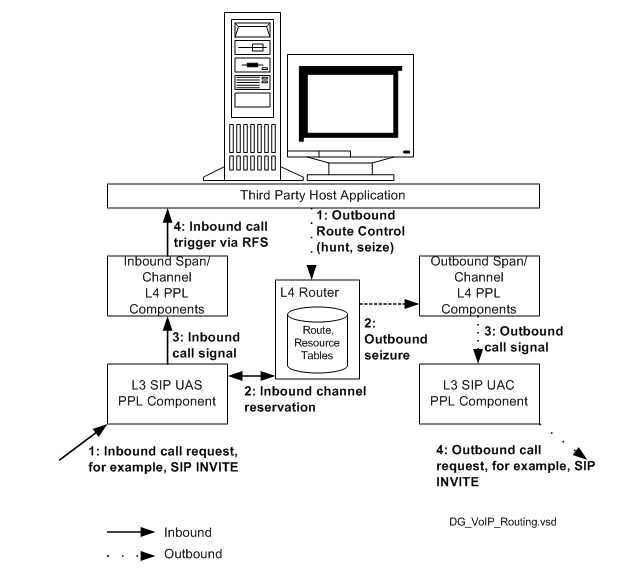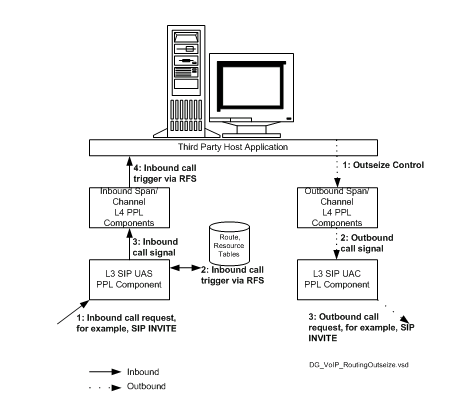
You are here: CSP Developer’s Guide: Internet Protocol > 5 Session-Initiation Protocol (SIP) Software > Routing with Route Control or Outseize Control messages
Routing with Route Control or Outseize Control messages

Overview
This section provides an overview of routing VoIP calls controlled by SIP where your host application uses the Route Control or Outseize Control message to route the outbound side of the call. This section contains references to full explanations of each process.
Route Control
Using the Route Control message allows the host application to leverage Layer 4 Router functionality thereby relieving the host application from making the span/channel assignments on the IP Network Interface card modules.
The following diagram shows a call controlled by SIP signaling Refer to Routing SIP and H.323 Calls Using Route Control Message for a full explanation of this process.
Figure 5-2 Routing Overview - Inbound and Outbound

Outseize Control
VoIP applications can use the Outseize Control (0x002C) message for outbound SIP signaling. This method is required for application developers who:
• are migrating TDM applications to the VoIP environment if the TDM applications already use the Outseize Control message
• want to control the selection of spans/channels
Important! The host application is responsible for selecting the span and channel for each outbound call on a per call basis. The host application also selects the source IP address and port.
If you do not want the host application to be responsible for the channel management, you can use the Route Control message instead. Refer to Routing SIP and H.323 Calls Using Route Control Message.
The figure below provides an overview of the routing process. Note that the inbound side of the call is the same as described in the previous section. The outbound side involves the Outseize Control message rather than the Route Control message. Refer to Routing SIP and H.323 Calls Using Outseize Control Message for a full explanation of this process.
Figure 5-3 Routing Process with Outseize Control Message
